
TONY Design Organic Fertilizer Pellet Line Specification
There are a lot of raw materials for organic fertilizer production, and most of these raw materials are directly discarded, causing a waste of resources and polluting the environment at the same time, and are made into organic fertilizer pellets, truly realizing "turning waste into treasure.
1. Animal And Plant Residues
(1) Straw: The remaining part of the crop after harvest, such as corn stalk, wheat straw, etc., can be used as organic fertilizer raw materials. Straw contains rich organic matter such as cellulose, which can be converted into organic fertilizer after composting and other treatment.
(2) Leaves: For example, the leaves of trees dropped in autumn and winter can be collected and used to make organic fertilizer. Decaying leaves can increase the content of organic matter in soil.
(3) Hay: Grass and wood ash after burning hay is an organic fertilizer, which contains a variety of mineral elements such as potassium; Hay can also be fermented directly from compost to produce organic fertilizer.
(4) Animal Bones: The bones are cleaned and dried and crushed, put into a closed container, and add water to the sun to make phosphate fertilizer. Bone is rich in phosphorus, which can provide phosphorus nutrition for plant growth and promote plant root development
2. Kitchen Waste
(1) Peel And Vegetable Leaves: The leftover peel and vegetable leaves are collected, and can be mixed into the soil after shredding, or buried under the soil alone, and become organic fertilizer after a period of time; It can also be packed in a container, mixed with about 3/4 of water, placed in a warm place, two or three weeks can become organic fertilizer, need to add water before use. This food waste is rich in nutrients that many plants need, such as nitrogen, phosphorus and potassium.
3. Animal Manure
(1) Chicken Manure: Chicken manure is a common organic fertilizer raw material, but chicken manure is relatively single, and if the chicken is playing hormones from a young age, untreated or decomposed directly applied to the crop has harm and hidden dangers, such as making the soil temporarily hypoxia. Generally, it needs to be decomposed before it is suitable for application as an organic fertilizer, such as the fermentation treatment of EM original bacterial liquid, which can convert the nutrients in chicken manure into a form that can be absorbed by plants, while reducing harmful germs and eggs.
(2) Pig Manure, Sheep Manure, Etc. : These livestock and poultry manure can be used as raw materials for organic fertilizer. The fermented manure is rich in nitrogen, phosphorus, potassium and other nutrients, which can provide comprehensive nutrition for crops.
4. Other Categories
(1) Biogas Slurry:Biogas slurry contains rich nutrients required by a variety of crops, such as boron, copper, iron, calcium, zinc and other trace elements, as well as a variety of substances, such as various amino acids, vitamins, proteins, sugars, nucleic acids, enzymes and beneficial microbial antibiotics. Full nutrients, fast fertilizer efficiency, easy to be absorbed by crops, less residue, not only can improve the soil rhizosphere environment, loose soil, and little salt accumulation, is a high-quality organic fertilizer raw material2.
(2) Edible Fungi Residue:After the production of edible fungi, the residue can also be used as an organic fertilizer raw material after treatment, which also contains certain nutrients and beneficial microorganisms, which can improve the soil structure and fertility.
(3) Industrial Waste (Part) :Such as wine lees, vinegar lees, cassava residue, etc., can be made into industrial waste organic fertilizer after treatment. These raw materials contain certain organic substances and nutritional elements that can be utilized by plants, but they need to ensure compliance with relevant environmental and quality standards when used.
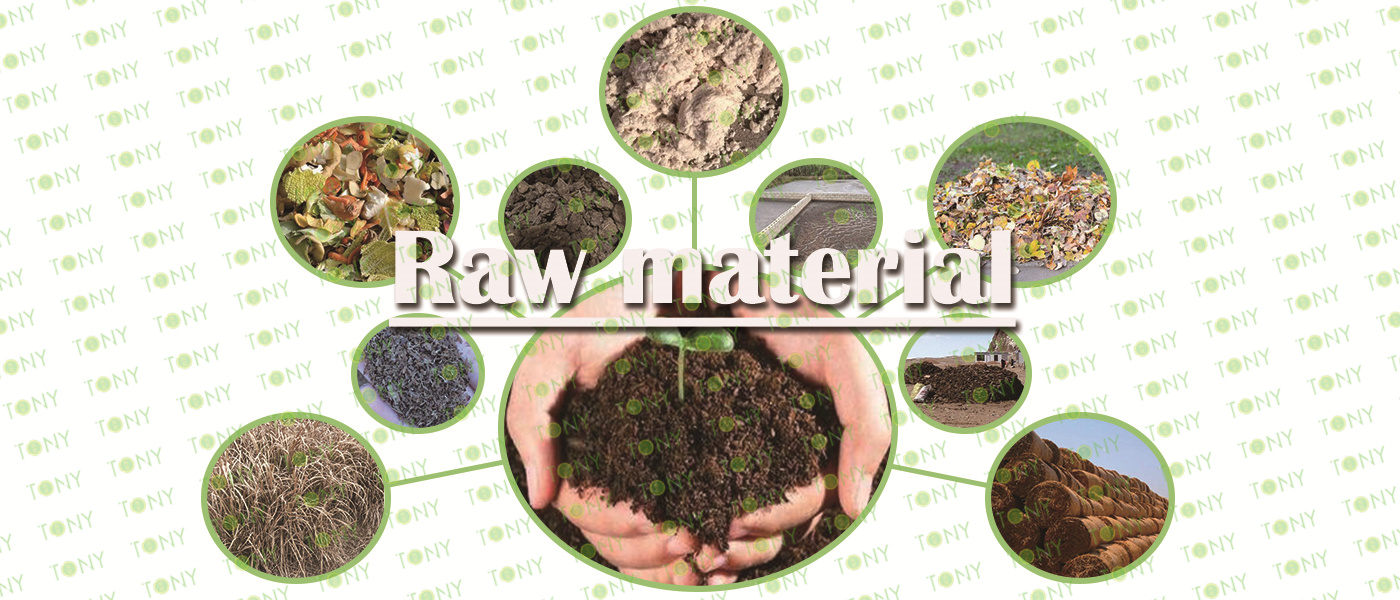
Organic fertilizer, also known as farm fertilizer, is a fertilizer that contains organic matter (carbon compounds). These fertilizers are mainly derived from animal and plant residues or metabolites, including but not limited to human and animal feces, straw, animal residues, slaughterhouse waste, etc. 3. Organic fertilizers are characterized by many kinds, wide sources and long fertilizer efficiency. Most of their nutrient elements are organic, which is difficult for crops to use directly. It is necessary to release a variety of nutrient elements slowly through the action of microorganisms, so as to continuously supply nutrients to crops.
A variety of raw material sources: such as fermented medicinal residue, smoke residue, humic acid, amino acid, composite microbial strains can be used as its ingredients, there are also chicken manure, pig manure, sheep manure and other livestock manure as the main raw materials made of granular organic fertilizer.
Nutrient content: Usually organic matter content ≥45%, nitrogen, phosphorus and potassium ≥5%, humic acid ≥10%, effective viable bacteria number ≥ 200 million/g.
Organic fertilizer is an important agricultural resource, which plays an important role in increasing crop yield, improving soil quality and protecting the environment. With the improvement of people's awareness of food safety and environmental protection, the application prospect of organic fertilizer is broad.
The main difference between organic fertilizer and inorganic fertilizer is the source, composition, function and so on.
|
Feature |
Organic Fertilizer |
Inorganic Fertilizer |
|
Source & Ingredients |
Organic matter derived from nature, such as animal and plant residues, compost, green manure, etc. Often referred to as farm manure, it can be made by processing human and animal manure, straw, animal residues, slaughterhouse waste and other materials. |
Synthetic production through chemical industry, mainly including nitrogen fertilizer, phosphate fertilizer, potassium fertilizer and compound fertilizer. |
|
Fertilizer |
Lasting fertilizer effect, can improve soil structure, promote microbial activity. Its nutrients are slowly released through microbial decomposition, providing nutrients required for plant growth, and improving the water and fertilizer retention capacity of soil. |
It can quickly meet the needs of crop growth, but long-term excessive use may lead to soil compaction and affect the physical and chemical properties of the soil. |
|
Nutritional |
It is rich in organic matter, nitrogen, phosphorus, potassium and other nutrients and trace elements. |
The content of nutrient elements is high, but the composition is relatively simple, mainly nitrogen, phosphorus, potassium and so on |
|
Mechanism |
In the soil through the decomposition of microorganisms, slowly release nutrients, improve soil structure, improve soil fertility. |
The rapid release of nutrients can quickly meet the needs of crop growth, but it may have a negative impact on the soil and the environment. |
|
Environmental Impact |
The ingredients are natural and environmentally friendly. |
The production process can produce large amounts of greenhouse gases, and excessive use can also lead to soil and water pollution. |
|
Method Of Applying |
It is usually applied as a base fertilizer to provide long-lasting nutrients. |
Topdressing mainly depends on crop growth to meet rapid nutrient needs |
|
Applicable Scenario |
It is suitable for crops with long growth cycle and stable nutrient demand, such as food crops. |
It is suitable for crops with short growth period and large fertilizer requirement, such as vegetables and some cash crops. |


1. Easy To Apply
Reduce waste: Organic fertilizer pellets are easier to apply than powder, especially in Datian operations. Powder -like organic fertilizer is easily blown by wind, causing waste. The pellet organic fertilizer is more stable and it is not easy to be taken away by the wind.
2. Improve Fertilizer Effect
Add inorganic ingredients: In the production process of organic fertilizer pellets, some inorganic ingredients can be added, such as trace elements and minerals to improve fertilizer effect. These ingredients are prone to moisture absorption and block in powder fertilizers, affecting the effect of use.
Slowly release: pellet organic fertilizer can slowly release the nutrients in the soil, extend fertilizer efficiency time, and better meet the needs of crop growth.
3. Convenient Storage And Transportation
It is not easy to lump: Pellet organic fertilizer is not easy to knot in the storage and transportation process, and has better physical stability. This allows fertilizers to maintain good quality in long -term storage and long -distance transportation.
The weight is appropriate: the weight of pellet organic fertilizers is moderate, which is convenient for handling and use.
4. Advantages In The Production Process
Reduce dry demand: Organic fertilizer often contains more moisture in the production process and requires drying. The pellet organic fertilizer will generate high heat during the pelletity process. It only needs to be cooled, reducing the drying steps and reducing production costs.
Process improvement: The production process of pellet organic fertilizers is more fine, which can better control the composition and quality of fertilizers and improve the market competitiveness of products.
5. High Market Acceptance
Beautiful appearance: Pellet organic fertilizer is neat and beautiful, and it is easier to be accepted by the market. Many farmers and growers tend to buy good fertilizers with good appearance because they look more professional and reliable.
In summary, organic fertilizer into pellets not only improves the effectiveness of fertilizer and market competitiveness, but also simplifies the production and transportation process. It is a more scientific and efficient approach.
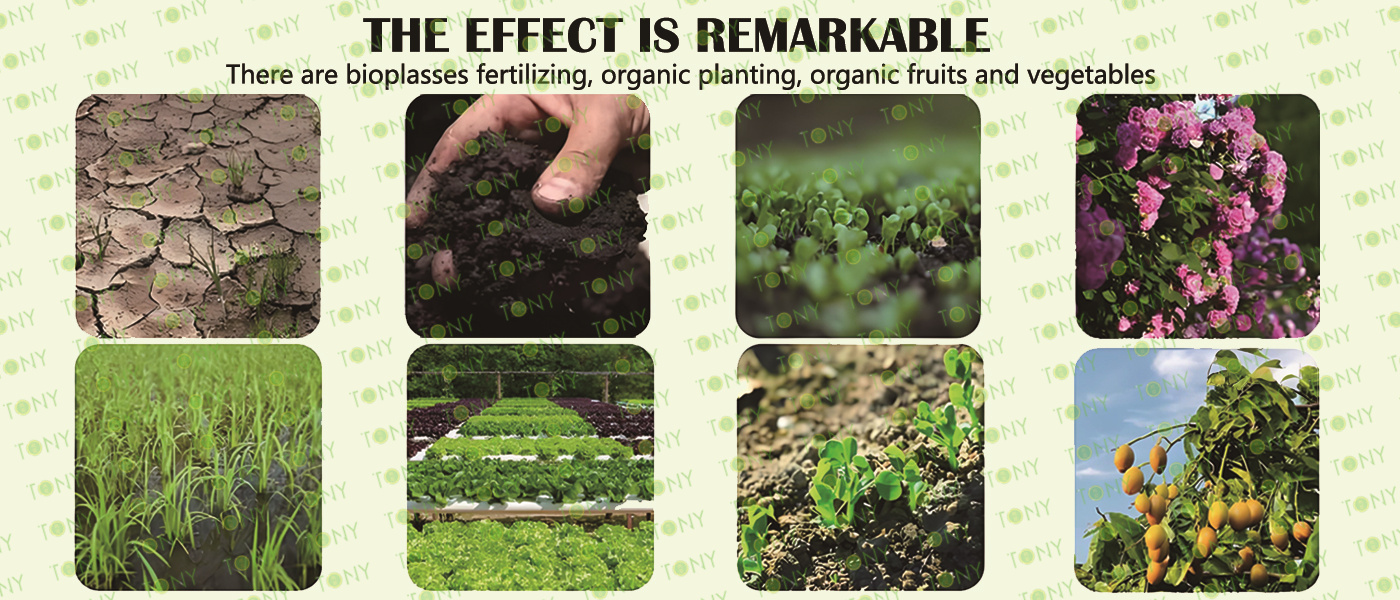

1. Economic Benefits
(1) Market Demand And Competition
With the improvement of food quality requirements, people's attention to pesticide residues, fertilizer pollution and other issues is also increasing. Therefore, as a green and environmentally friendly agricultural input, the market demand for organic fertilizer is gradually expanding. The major players in the organic fertilizer market include traditional fertilizer companies, organic fertilizer producers, and some new bio-organic fertilizer companies. Among them, the market share of traditional fertilizer companies is still large, but due to its impact on the environment and the quality of agricultural products, the market demand is gradually shifting to organic fertilizers. Organic fertilizer production enterprises because of its environmental protection, ecological advantages, the market competitiveness is relatively strong.
(2) Production Cost And Profit Analysis
The production of organic fertilizer mainly relies on biological fermentation, composting and biogas fermentation methods, which require a large number of biomass resources as raw materials, such as crop stalks and livestock manure. The production process of organic fertilizer requires a large amount of labor for management, maintenance and operation, including transportation, crushing, mixing, granulation, composting and other links. Labor costs account for about 20% of the total cost. Equipment costs include fermentation tanks, mixers, screening machines, etc. Equipment acquisition and operation costs account for about 15% of the total cost. Other costs include electricity, water, office, transportation, etc., which account for about 15% of the total cost. The production cost can be reduced effectively by rationally arranging the production process, improving the utilization rate of equipment and optimizing the allocation of human resources. For example, by improving the production process, raw material costs can be reduced by 10%; By improving employee productivity, labor costs can be reduced by 5%. Therefore, by strictly controlling costs, profits can be effectively increased.
(3) Increase Financial Revenue
The payback period of organic fertilizer projects is short and the profit margin is high.
2. Environmental Benefits
(1) Improve Soil Structure
Organic fertilizer is decomposed by microorganisms in the soil, which can continuously release nutrients required by various crops, while releasing a large amount of carbon dioxide to promote photosynthesis and improve crop yield. In the process of decomposition and transformation, organic fertilizer improves and optimizes the nutritional conditions of crops, not only increases the absorption of nutrients by crops, enhances metabolism and stimulates growth and development, but also greatly improves the quality of agricultural products.
(2) Reduce The Use Of Chemical Fertilizers
The long-term use of chemical fertilizers has caused a decline in fertilizer efficiency, low utilization rate, soil compaction and other drawbacks. The use of organic fertilizers can reduce the use of chemical fertilizers and protect the ecological environment.
(3) Waste Resources
The production process of organic fertilizer is to mix special functional microbial strains with organic matter such as livestock and poultry manure, and turn waste into treasure through fermentation. In this way, livestock breeding and the by-products of farmers raising livestock and poultry can be fully utilized, purifying the environment, increasing benefits, and promoting the sustainable development of agriculture.
3. Social Benefits
(1) Improve The Quality Of Agricultural Products
The use of organic fertilizers can improve the quality of agricultural products and reduce the accumulation of harmful substances, which is one of the reasons why agricultural products with organic fertilizers are more popular in the market.
(2) Promote Sustainable Agricultural Development
Organic fertilizers play an irreplaceable role in promoting the development of food and agricultural production. However, at present, there are also problems such as excessive application and blind use of chemical fertilizers, which have led to increased costs and environmental pollution. It is urgently necessary to improve fertilization methods, improve the utilization rate of organic fertilizers, reduce irrational inputs, ensure the effective supply of major agricultural products such as grain, and promote sustainable agricultural development.
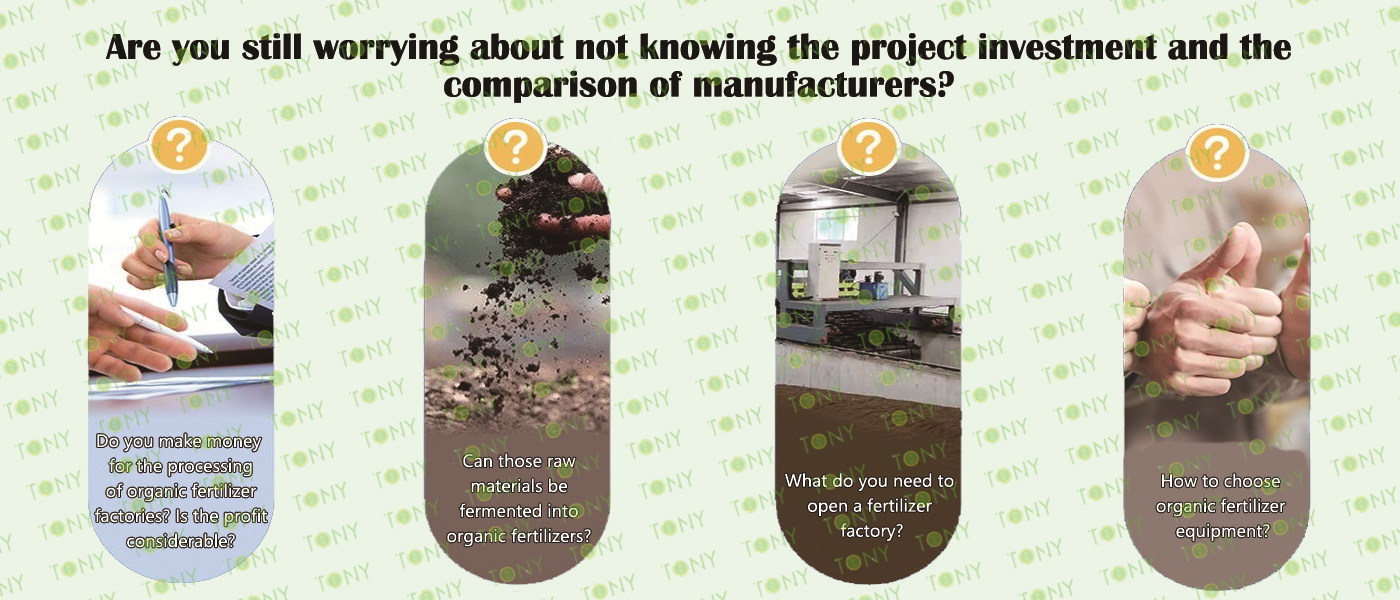

Organic fertilizer pellets have several significant advantages:
1. Not Easy To Caking
In the organic fertilizer production line, the granulation process can effectively avoid fertilizer agglomeration, thereby improving its storage and transportation performance.
2. Easy To Add Inorganic Ingredients
In the granulation process, some inorganic ingredients can be added to improve the efficiency of organic fertilizer, while powdered fertilizer is easy to absorb moisture and caking if inorganic ingredients are added.
3. Release Nutrients Slowly
Organic fertilizer pellets can play the role of slow release of fertilizer effect, so that nutrients can continue to supply plants and prolong fertilizer efficiency.
4. Fertilization Is Convenient
Organic fertilizer pellets are more convenient in fertilization, not easy to be blown away by the wind, suitable for a variety of fertilization methods, including bottom fertilizer, hole application, ditch application and root irrigation.
5. Reduce Water Impact
Organic fertilizer pellets generate high heat during the granulation process and only need to be cooled, so it is more convenient in terms of handling moisture, while powdered organic fertilizer needs to be produced under lower moisture conditions.
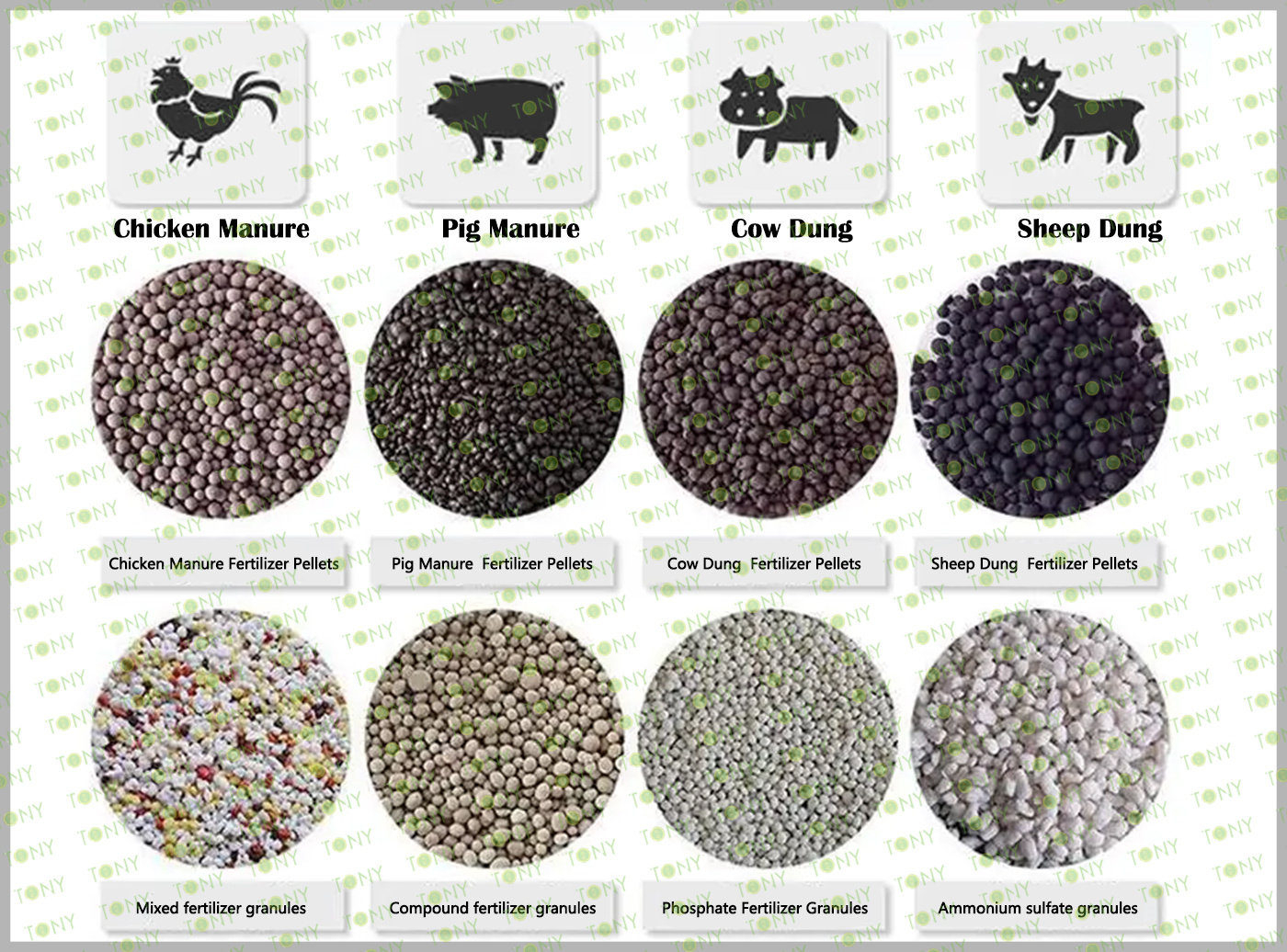

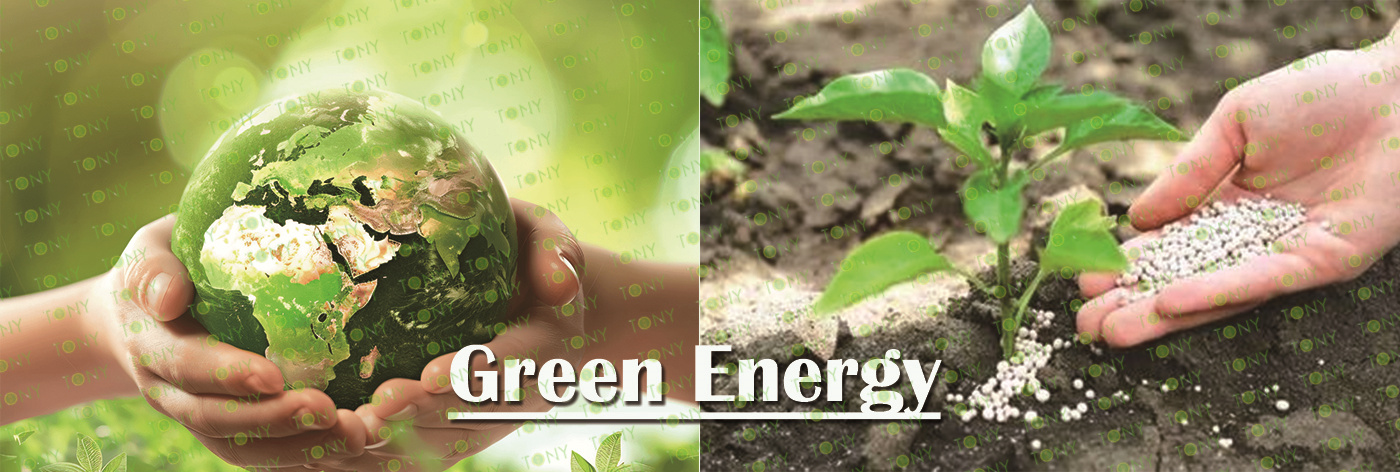
1. The Market Prospects Are Broad
As an environmentally friendly, sustainable agricultural investment product, organic fertilizer pellets have been favored by more and more farmers and organic farmers in recent years. Compared with chemical fertilizers, organic fertilizer pellets can provide various nutrients required for crops, while improving the soil structure, increasing soil microbial activity, and promoting soil health.
2. Increase Market Demand
With the continuous improvement of people's awareness of green food and organic agriculture, the demand for organic fertilizer is also increasing. Organic fertilizers can not only improve the quality and output of crops, but also promote the improvement of the agricultural ecological environment, making agricultural production more sustainable.
3. Market Development Trend
(1) Resource Cycle
Promote the efficient transformation and utilization of organic substances such as livestock and poultry feces, kitchen waste and agricultural waste, and form a virtuous cycle of waste -resource -products and reduce environmental pollution.
(2) Technological Innovation
Through the development of biotechnology, fermentation engineering and microbial bacteria, improve the fertilizer effect and biological activity of organic fertilizer, shorten the rotten cycle, reduce production costs, and promote the modernization and large -scale development of the industry.

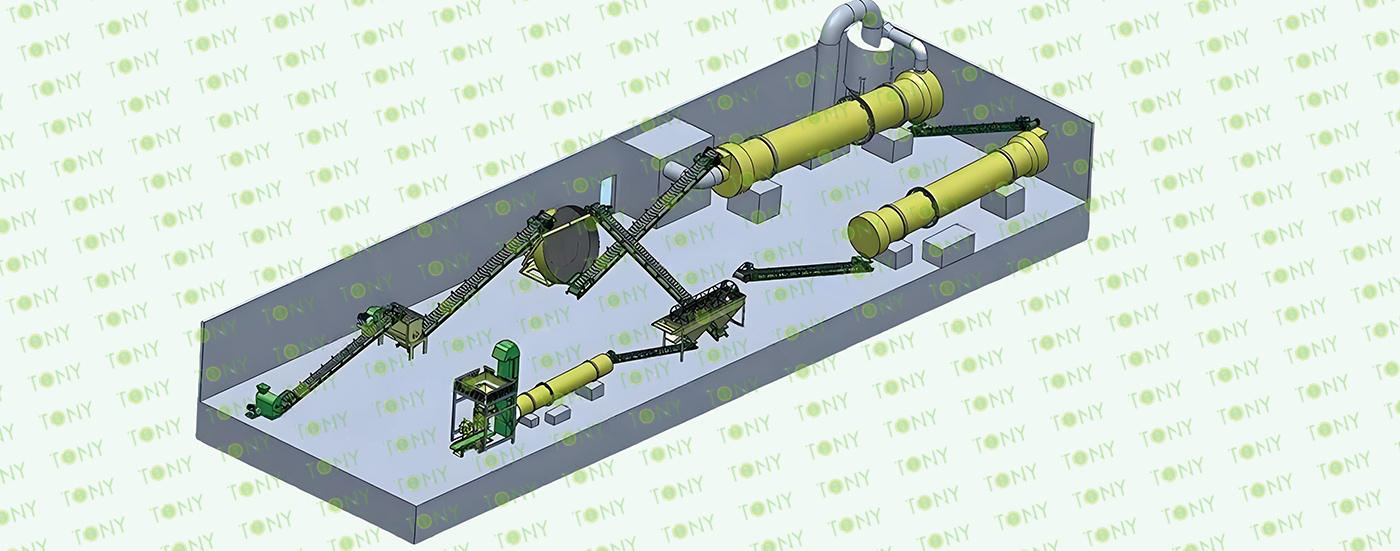
1.The Working Principle Of organic Fertilizer Processing Equipment
Organic fertilizer pellet processing equipment uses the high-speed rotary mechanical stirring force and the resulting air force to make the fine powder material continuously mixed in the machine, granulation, spheroidization, densification and other processes, so as to achieve the purpose of granulation. The particle size uniformity can be adjusted according to user requirements through the stepless speed control function. It is most suitable for direct granulation after organic fertilizer fermentation, which greatly reduces manufacturing costs. The application range is wide, the processed organic fertilizer particles have high sphericity and good ball quality. Typical application materials: chicken manure, pig manure, cow manure, sheep manure, kitchen waste, straw, hay, etc.
2.Characteristics Of organic Fertilizer Processing Equipment
(1) High Degree Of Automation
Organic fertilizer processing equipment usually has the characteristics of highly automation. From materials to the production of finished products to achieve one-stop production, only a small number of personnel (such as 3-5 people) can complete the entire production process, which greatly improves production efficiency.
(2)Energy-Saving And Environmental Protection
Organic fertilizer processing equipment has almost no noise and pollution in the production process, and there is no "three waste" emissions, which has a small impact on the environment. In addition, their production energy consumption is also low, with more than 50%more energy conservation than traditional crafts.
(3)Low Investment Cost
The area of organic fertilizer processing equipment has a small area, less overall investment, short production cycle, small equipment investment, large scale or small, which is very suitable for agricultural production needs of different sizes.
(4)Multi-Functional
Organic fertilizer processing equipment is suitable for various plants such as crops, vegetables, fruits, tea, and Chinese medicinal materials, and has a wide range of applications.
(5)Simple And Easy To Operate
The processing technology of organic fertilizer processing equipment is simple, high degree of automation, low failure rate, and easy to master maintenance and operation technology, making maintenance and operation more convenient.
3.Application Scenarios Of organic Fertilizer Processing Equipment
(1) The Breeding Industry
Organic fertilizer equipment can handle waste such as breeding animal feces and kitchen waste waste, produce organic fertilizer, and realize the recycling of resource.
(2) Agricultural Planting
Organic fertilizer equipment can produce high -quality organic fertilizers to meet the needs of agricultural planting, while improving the quality and yield of crops.
(3) Garden Industry
Organic fertilizer equipment can handle garden waste, such as branches, leaves, grass chips, etc., produced organic fertilizer materials for garden planting and soil improvement.
(4) Environmental Protection Industry
Organic fertilizer equipment can reduce the discharge and treatment of waste, reduce environmental pollution, and promote the development of environmental protection.

1.Project Name:organic Fertilizer Pellet Line
2.Raw Materisl:Organic Waste,Such as sheep dung, pig dung, chicken dung, duck dung, cow dung, straw. corn stalkw, mushroom, sludge, etc
3.Moisture Of Raw Material: Initial humidity about 70%
4.Capacity:TONY can supply customers organic fertilizer pellet line with capacity 0.8t/h-100t/h, according to the actual production needs of customers
5.Process:Fermenting process→Fine crushing process→Dosing process→Mixing process→pelleting process→Drying process→Cooling process→Screening process→Coating process→Packing process
6.Main Machine:Grooved Pile, Vertical Crusher, Automatic Doser, Dual Screw Mixer, Disc Pelleting Machine, Rotary Drum Dryer, Drum Cooler, Vibration Classifier, Coating Machine, Semi-automatic Packing Machine, And Belt Conveyors.
7.Total Power:Based on all selected equipment models,according to all the equipment models selected, different models have different power.
8.Need Area:Based on all selected equipment models,according to all the selected equipment models, different models of equipment sizes are different.
9.Project Country:Can be used in any country.
10.Voltage:The voltage standard of the country in which the equipment is used.

Organic fertilizer pellets are mainly the cattle and sheep manure with microbial fermentation, so that it is fully decomposed, deodorized, dehydrated, fermented and decomposed until the water content of 30-35% organic matter, after grinding, mixing, granulation, drying, cooling, screening, finished pelllets are coated, transported to the finished product bin, packaging into storage. The material transfer between each equipment in the entire production process is configured according to the equipment configuration requirements.
1.Capacity:TONY can supply customers organic fertilizer pellet line with capacity 0.8t/h-100t/h, according to the actual production needs of customers.
2.Raw Materials:Organic Waste,Such as sheep dung, pig dung, chicken dung, duck dung, cow dung, straw. corn stalkw, mushroom, sludge, etc.
3.Moisture:Initial humidity about 70%.
4.Application:The breeding industry,Agricultural planting,garden industry,environmental protection industry.
5.Finished Pellets Markets: Agricultural growers, horticulturists, eco-agricultural practitioners, green food producers, farm households and farmers' cooperatives.


|
Project Brief Introduction: 1.Product:organic Fertilizer Pellet Line 2.Capacity:TONY can supply customers organic fertilizer pellet line with capacity 0.8t/h-100t/h, according to the actual production needs of customers 3.TONY Brand organic Fertilizer Pellet Line Project Process 4.Main Machine:Trough Turner,Vertical Crusher,Automatic Doser,Dual Screw Mixer,Disc Pelleting Machine,Rotary Drum Dryer,Rotary Drum Cooler,Vibration Classifier,Coating Machine,Semi-automatic Packing Machine,And Belt Conveyors 5.Total Power:Based on all selected equipment models,according to all the equipment models selected, different models have different power 6.Need Area:Based on all selected equipment models,according to all the selected equipment models, different models of equipment sizes are different 7.Project Country:Can be used in any country. |
Project Layout For Customer |
|
|


How to proceed organic fertilizer pellet?
It mainly contains the following steps and machines as following:
1.To Use TONY Trough Turner To Ferment Organic Waste,Such as sheep dung, pig dung, chicken dung, duck dung, cow dung, straw. corn stalkw, mushroom, sludge, etc Into Fermented Product.
2.To Use TONY Vertical Crusher To Crush Fermented Product Into Fermented Slag.
3.To Use TONY Automatic Doser To Dose Fermented Slag.
4.To Use TONY Dual Screw Mixer To Mix Raw Materials Into Uniform Material.
5.To Use TONY Disc Pelleting Machine To Products organic Fertilizer Pellet.
6.To Use TONY Rotary Drum Dryer To Dry Wet organic Fertilizer Pellet Into 15%-20% organic Fertilizer Pellet.
7.To Use TONY Rotary Drum Cooler To Cool 80-90℃ organic Fertilizer Pellet Into 20-30℃ organic Fertilizer Pellet.
8.To Use TONY Vibration Classifier To Grade 20-30℃ organic Fertilizer Pellet Into Uniform Organic Fertilizer Pellet.
9.To Use TONY Coating Machine To Encades Organic Fertilizer Pellet.
10.To Use TONY Packing Machine To Packing Organic Fertilizer Pellet To 15-50 Kg/Bags.
You Can Contact TONY To Get For More Details Information And Quoation.
TONY Can Supply You All The Products As Above With Competitive Price And Excellent Quality.
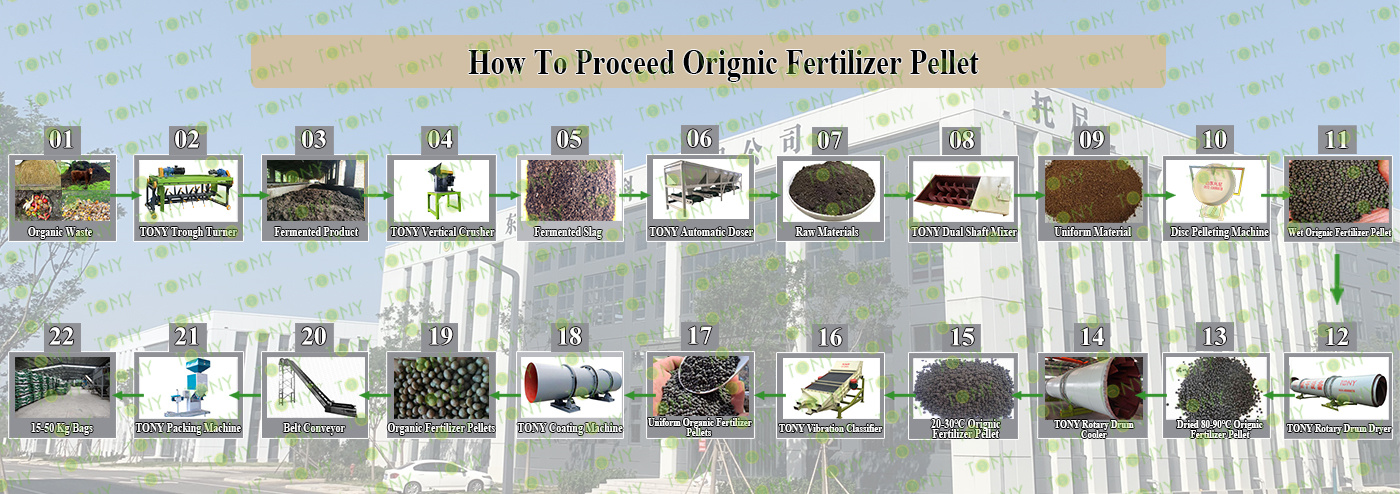


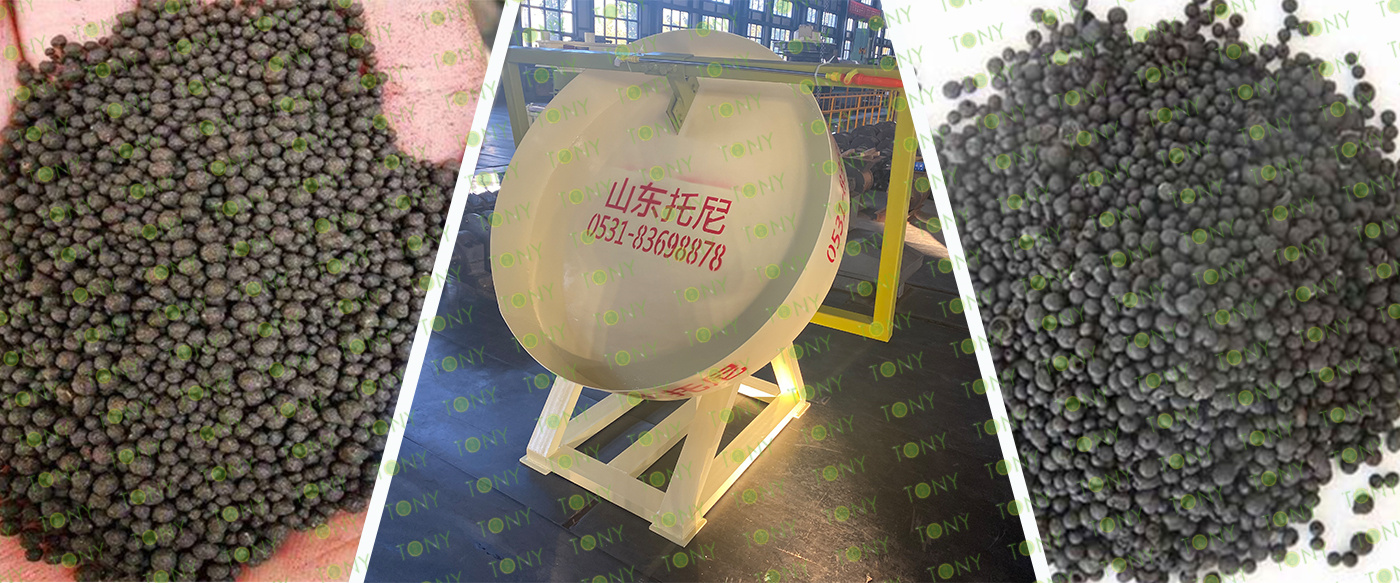
Following TONY Will Introduce For You For All The Necessary Machinery That Will Be Used For The Whole Pellet Production Line. Some machines can be custom made by customer according to different customer's detailed demand.Contact TONY for more details with quotation and layout.
|
|
|
|
|
|
|
Trough Turner |
Vertical Crusher |
Automatic Doser |
Dual Screw Mixer |
Disc Pelleting Machine |
|
1.To Do Stirring Operations, Regulate The Temperature And Moisture Of The Raw Material Pile, Improve The Permeability Of The Raw Material Pile 2.Models Can Be Selected Or Customized According To Production Needs |
1.The Fermented Material Goes Into The Crusher For Crushing To Remove Large Impurities And Uneven Pellets, 2.Models Can Be Selected Or Customized According To Production Needs |
1.The Ratio Between The Crushed Material And Other Necessary Additives Is Precisely Controlled According To The Formula Requirements 2.6-8 kinds of original materials at one time can be configured |
1.Mixing System Will Be Proportionally Configured Materials For Rapid, Equal Spoon Mixing, Fully Integrated. 2.Models Can Be Selected Or Customized According To Production Needs |
1.The Raw Material Is Compressed Into Pellets Under The Action Of Mechanical Force 2.The Main Methods Are Disc Pelletizing, Drum Pelletizing, Extrusion And So On.Etc. 3.Models Can Be Selected Or Customized According To Production Needs |
|
|
|
|
|
|
|
Rotary Drum Drye |
Rotary Drum Cooler |
Vibration Classifier |
Coating Machine |
Semi-Automatic Packing Machine |
|
1.To Dry The 55% Organic Fertilizer Pellets Into 15% Organic Fertilizer Pellets 2.Models Can Be Selected Or Customized According To Production Needs |
1.To Cool Organic Fertilizer Pellets From 80-90 ℃ To 20-30℃ Organic Fertilizer Pellets 2.Models Can Be Selected Or Customized According To Production Needs |
1.To Grade Organic Fertilizer Pellets Into Uniform Organic Fertilizer Pellets 2.Models Can Be Selected Or Customized According To Production Needs |
1.To Coat Organic Fertilizer Pellets 2.Models Can Be Selected Or Customized According To Production Needs |
1.Packing Organic Fertilizer Pellets To 15-50KG/Bags. 2.Model:TBF-50 3.Package Weight Is Adjustable |

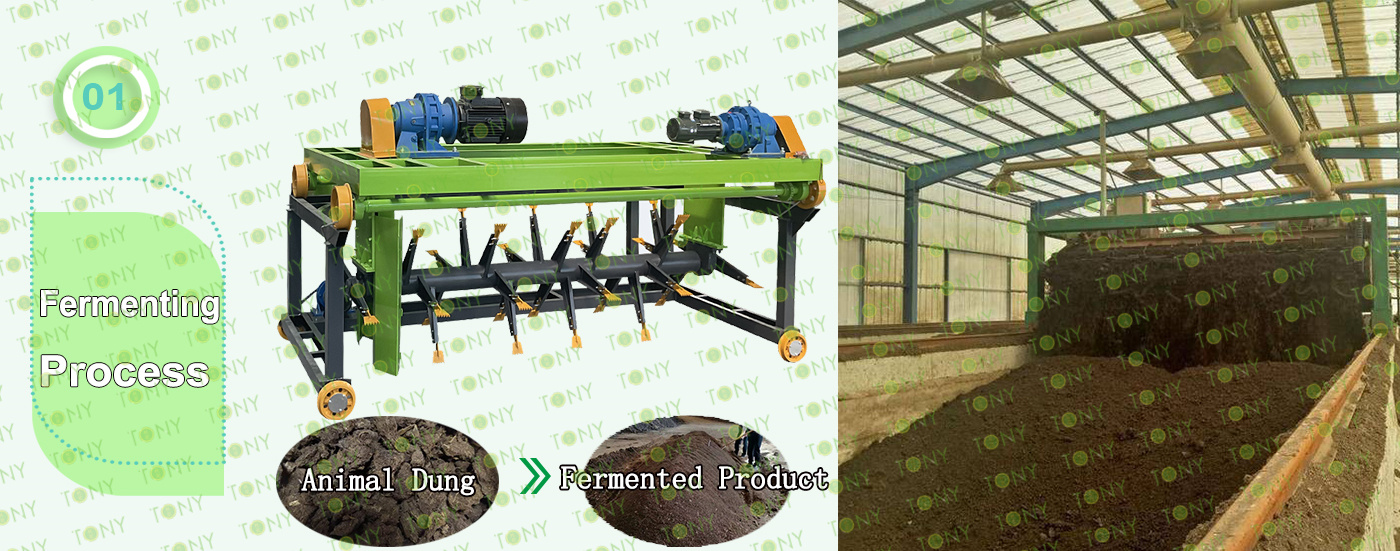
1.Organic Waste Fermenting Process:
A. This process mainly to use TONY Trough Turner to stir organic waste to ferment it
B.Generally, it is necessary to be equipped with organic waste according to market demand and soil testing results in various places, such as feces or fermented raw materials with fertilizer ef

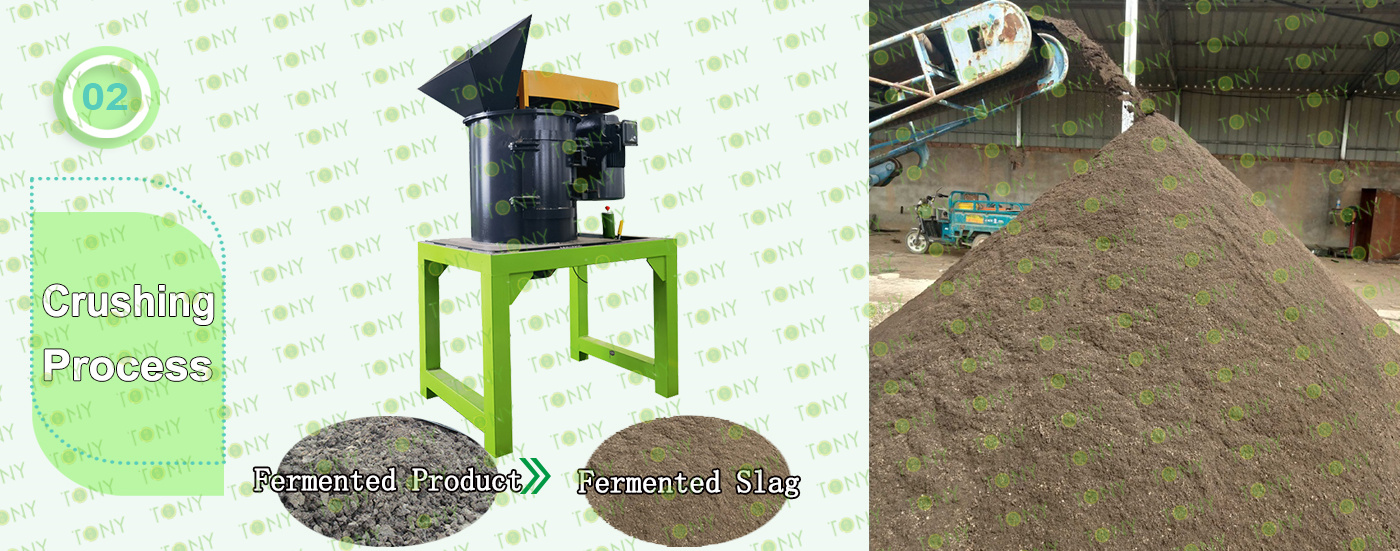
2.Fermented Product Fine Crushing Process:
A.This process is mainly used to fine crushing fermented product into fermented slag
B.Adding elements such as nitrogen, phosphorus and potassium can make the mineral elements contained meet the required standards.
Main parts:
(1)Automatic feede
(2)Feed distribution structure
(3)Motor
(4)Rotor: composed of hammer plate, pin, hammer, blade and locking structure
(5)Crushing chamber
(6) Body and hopper
Contact TONY for more details with quotation.

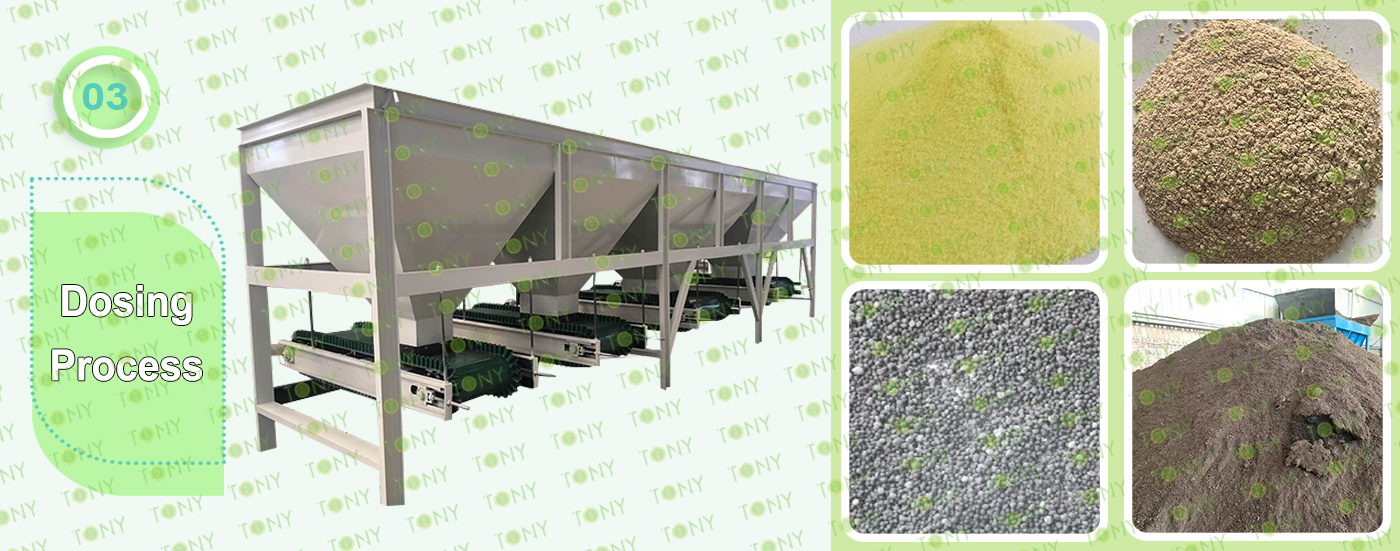
3.Dosing Process:
A. This process mainly to use TONY Automatic Doser to dose fermented slag
B.The electronic batching system has a dynamic batching machine and a static batching machine, which can configure 6-8 kinds of raw materials at a time.The belt width is 500/650/800/1000/1200mm in various specifications
C.Frequency conversion speed regulation technology, automatic quantitative adjustment precision
Main parts:
(1) Weighing body
(2) Feeding mechanism
(3) Discharge mechanism
(4) Electronic control system
It is mainly composed of weighing unit and control unit
Contact TONY for more details with quotation.

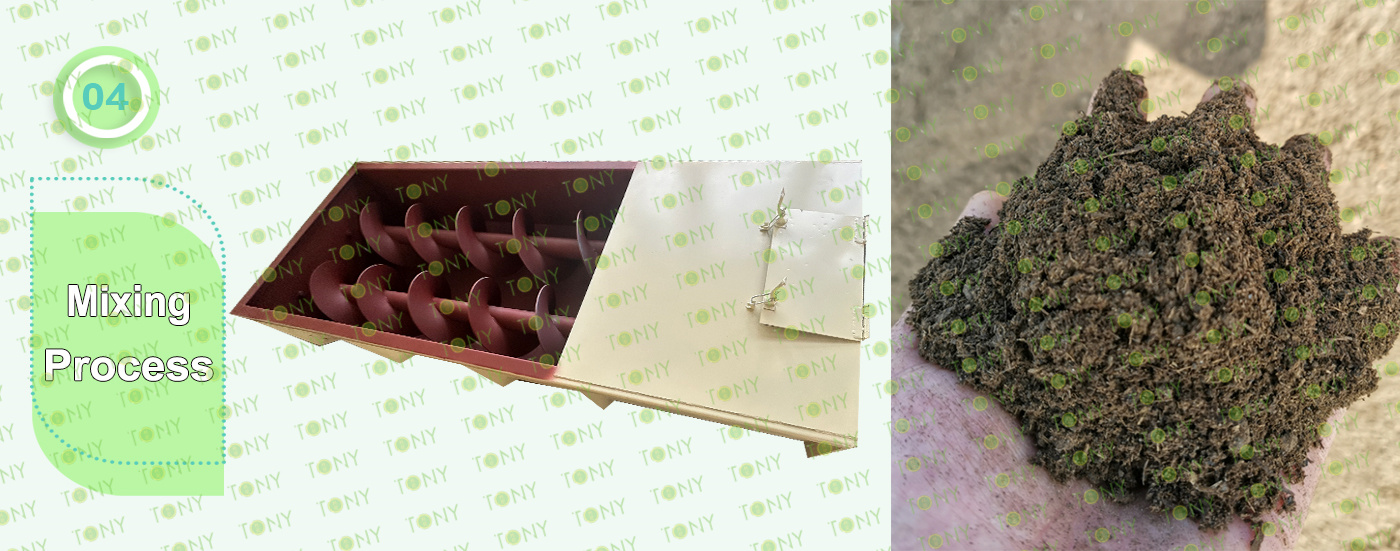
4.Mixing Process:
A.This process is mainly use TONY Dual Screw Mixer to mix fermented slag and other materials.
B.Two symmetrical screws are used to rotate synchronously to stir powdery materials
Main Parts:
(1) The fuselage shell
(2) Spiral axis assembly
Including left and right spinning spiral shafts, bearing seats, bearing sets, bearings, gears, sprockets, oil cups, leaves and other components.
(3) Drive device
Composition: consisting of motor, coupling, reducer, gear sideline, etc.
(4) Add water and damp pipe
Composition: Mainly consisting of receiving, joint and nozzles
(5) Cover
(6) Chain Cover
Contact TONY for more details with quotation.

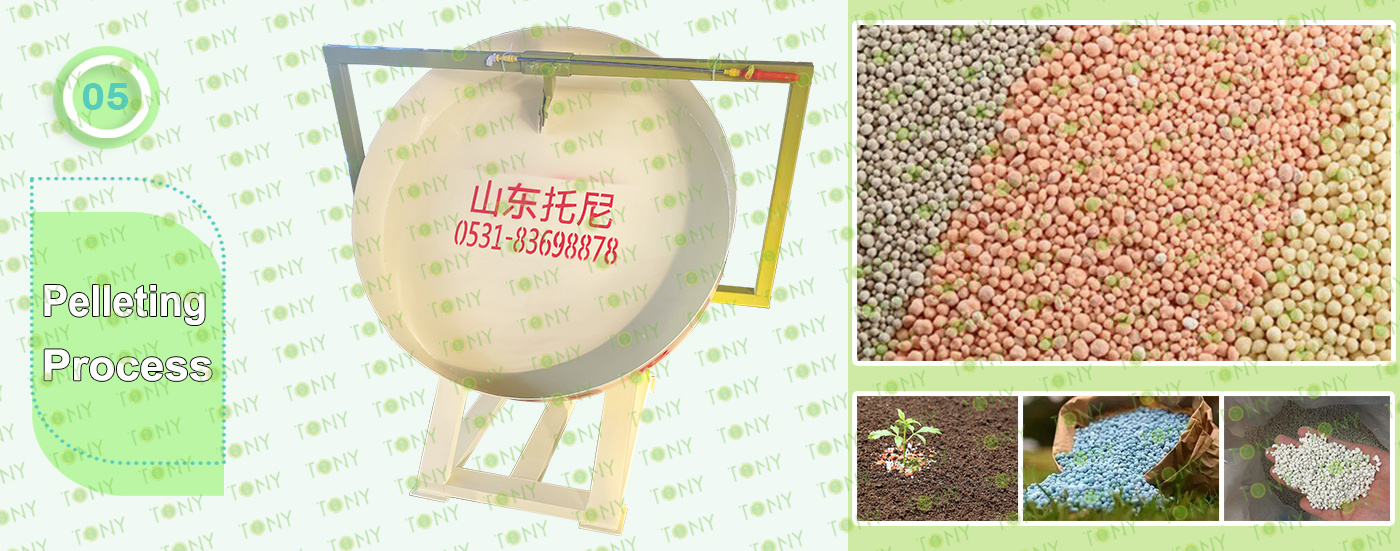
5.Pelleting Process
A.This process is mainly use TONY Disc Pelleting Machine to products organic fertilizer pellets
B.Disc Pelleting Machine produces pellets through continuous rotation of the disc, the overall arc structure, and the granulation rate can reach more than 93 percent
Main Parts:
(1) Pelleting disk
(2) Frame part
(3) Transmission part
It is composed of main motor, reducer, belt pulley, triangle belt and pinion etc
(4) Automatic cleaning device
(5) Adjustment part
Includes a granulated plate and a regulating mechanism.
The Main Methods Are Disc Pelletizing, Drum Pelletizing, Extrusion And So On.Etc.Contact TONY for more details with quotation.

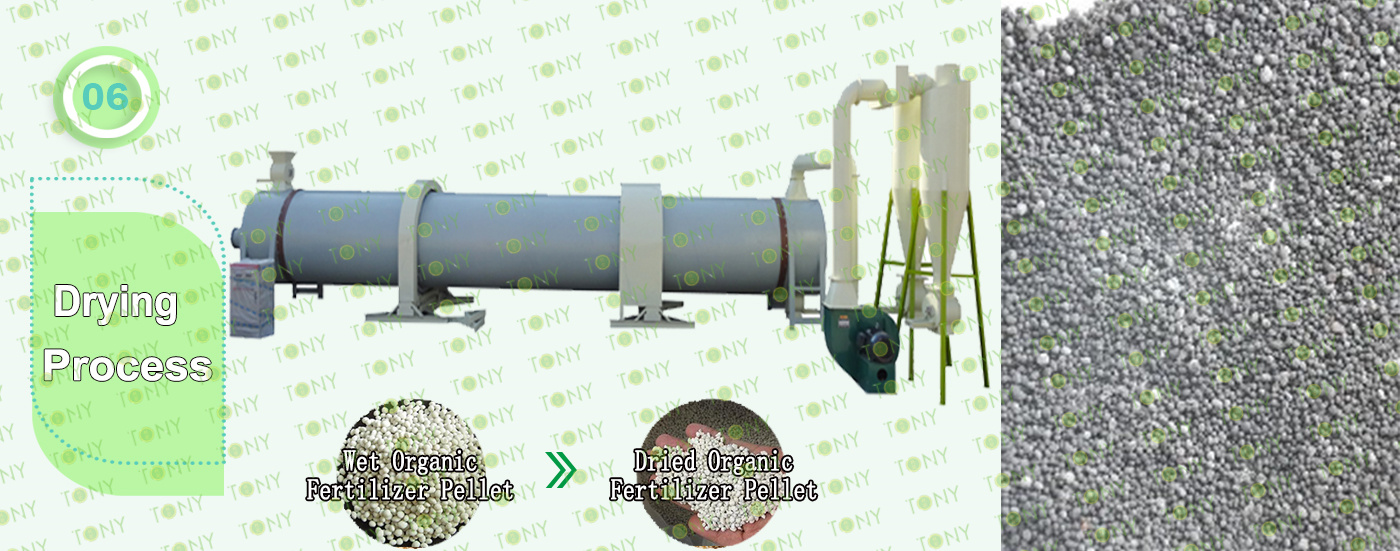
6.Drying Process:
A.This process is mainly use TONY Rotary Drum Dryer to dry the 55% organic fertilizer pellets into 15% organic fertilizer pellets
B.TONY dryer use spiral tube material, which has higher heart rate and is not easy to deform. Unlike other manufacturers with iron plate splicing welding, very easy to deformation.
C.The operation of TONY dryer requires hot blast stove to provide heat source.Hot blast stove is made of firebrick pan, shell with H steel plate as the frame. There are 3 layers of fire blocking device inside, which can effectively prevent the fire from entering the tumble dryer. A wide range of fuels can be selected, such as coal, straw, firewood and biomass pellets
Main parts:
(1)TONY's Rotary Drum Dryer Main Body.(Reducers With Motors and Pips.)
(2)TONY's Hot Blast Stove.
(3)Fan blower+Cyclone with airlock.
Contact TONY for more details with quotation.

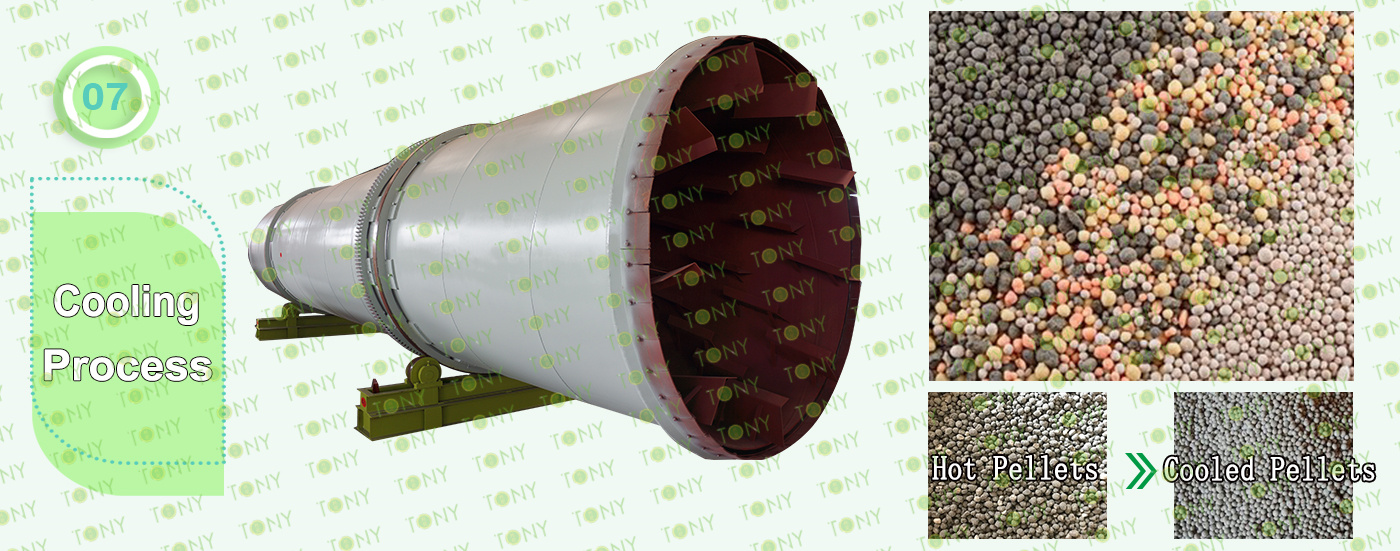
7.Cooling Process
A.This process is mainly use TONY Rotary Drum Cooler to cool the 80-90℃ organic fertilizer pellets into 20-30℃ organic fertilizer pellets
B.The high temperature organic fertilizer pellets enter the drum cooling machine through the feeding device, and drive the pellets to roll forward and exchange heat with the air during the rotation process, so as to achieve cooling
Main parts:
(1)TONY's Rotary Drum Cooler Main Body.(Reducers With Motors and Pips.)
(2)Driving gear
(3)Cooling unit
(4)Sealing device
(5)Wheel support device
Contact TONY for more details with quotation.

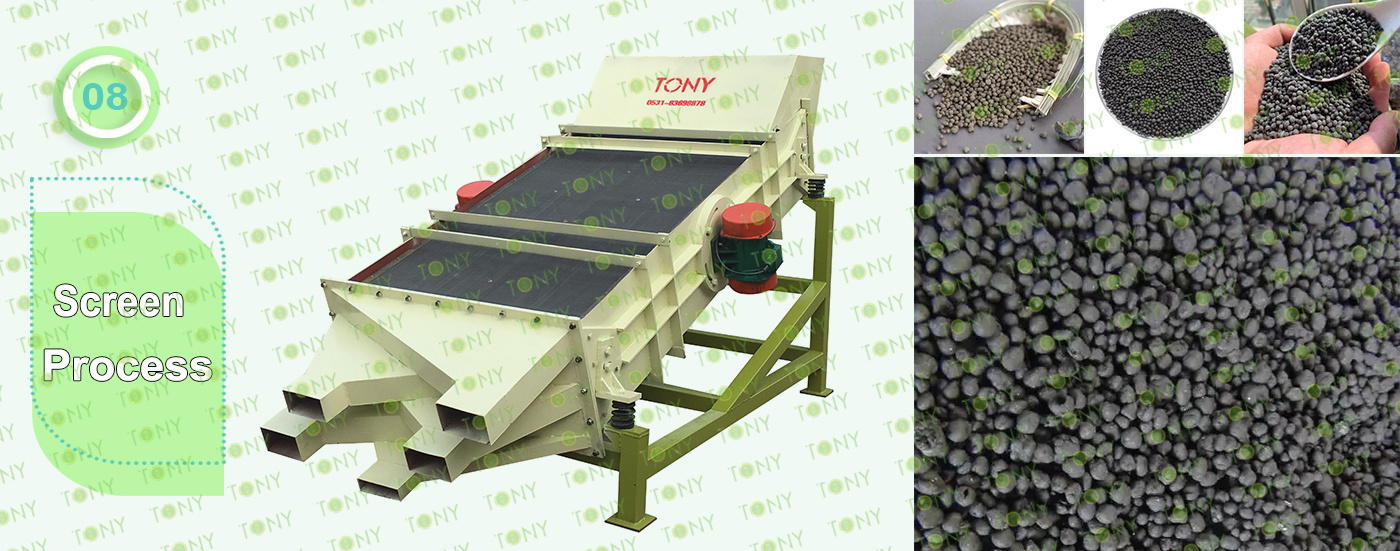
8.Screening Process
A.This process is mainly use TONY Vibration Classifier to grade organic fertilizer pellet into uniform organic fertilizer pellets
B.The vibration Classifier drives the screen body through the vibration motor, so that the material moves on the screen and realizes the classification according to the particle size. The vibration action helps prevent screen clogging and ensures continuity and consistency in the screening process
Main parts:
(1) Screen frame
(2) Sieve box
(3) Screen
The screen mainly includes low-carbon mesh, copper mesh, stainless steel mesh, etc., which is used to separate materials of different particle sizes.
(4) Vibration motor
(5) Motor pedestal
(6) Damping spring
Contact TONY for more details with quotation.

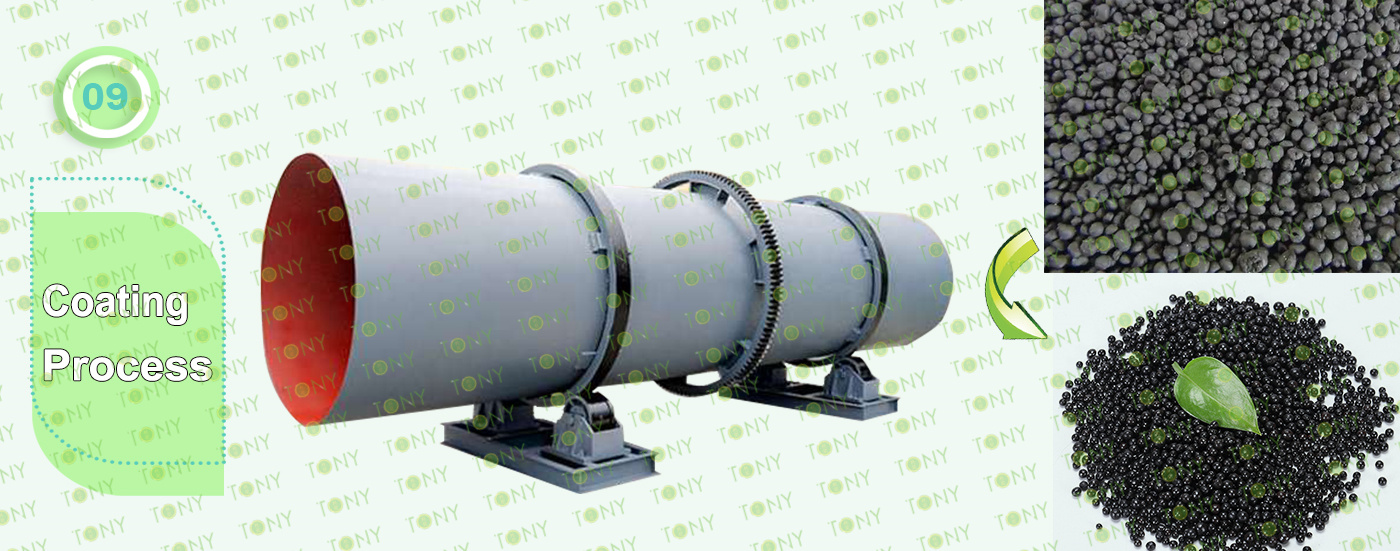
9.Coating Process
A.This process is mainly use TONY Coating Machine to encades organic fertilizer pellets
B.The material is added from the feed end, passes through the inside of the cylinder, accelerates the air flow inside the cylinder under the suction force of the induced draft fan, and completes the coating process
Main parts:
(1)Bracket Section
(2)Driving Part
(3)Body Part
(4)Big Gear Ring
(6)Tape Rolling
Contact TONY for more details with quotation.

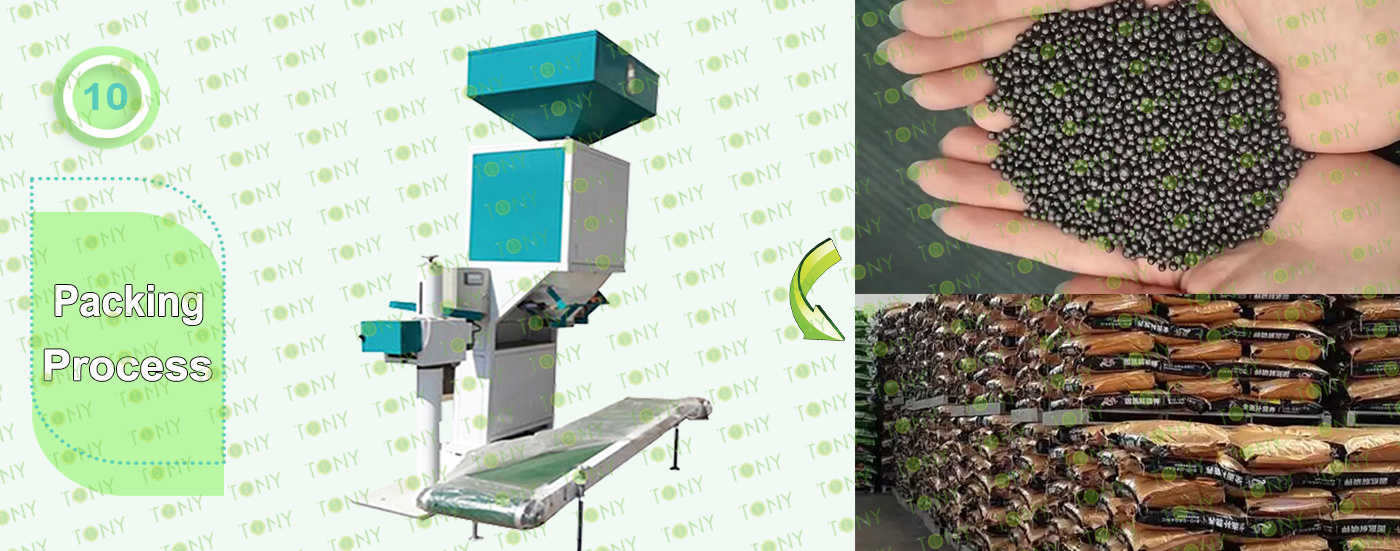
10.Packing process
A.This process is mainly use TONY Semi-Automatic Packing Machine to Packing Pellets To 15-50KG/Bags.
Main Parts:
(1)TONY's newTONY Semi-Automatic Packing Machine.
(2)Sew Machine, Buyer Can Also Chose Hot Seal Machine For Chosen,To Confirm With TONY For The Price Difference.
(3)Bags Transportation Conveyors.
(4)Feeding Inlet Silo With 1㎥.
(5)Electrical cabinets.
Contact TONY for more details with quotation.

TONY Detailed Design 3D Layout Organic Fertilizer Pellet Line According To Cusomer Factor Size
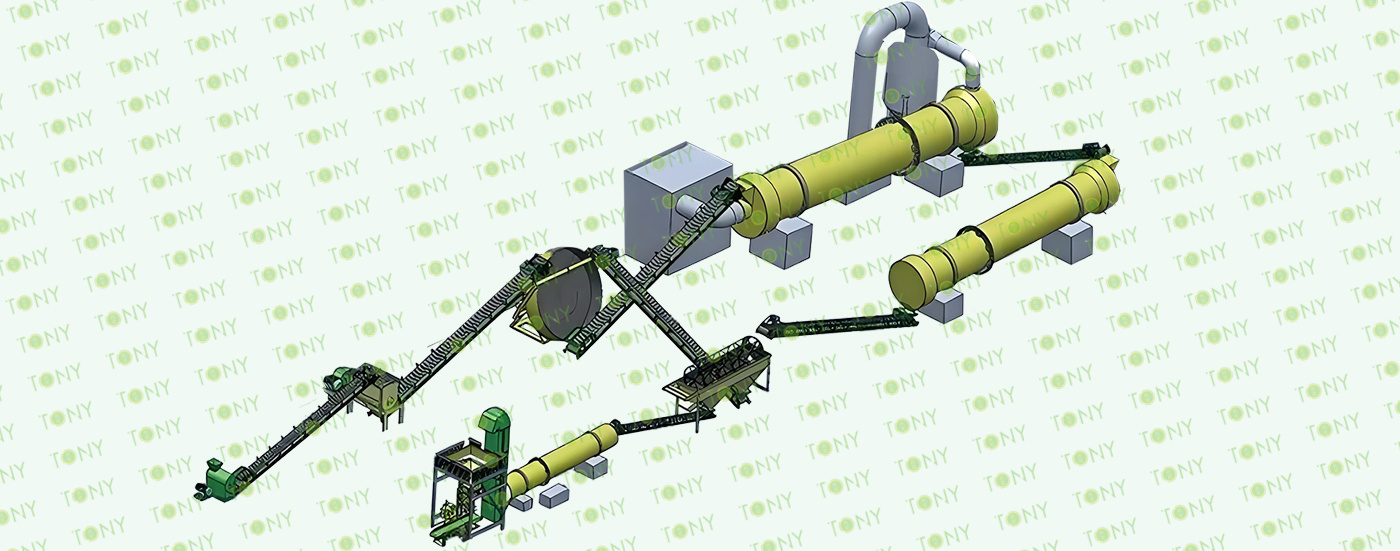


1. Ease Of Use
(1) Easy To Apply: organic fertilizer pellets are more convenient when applied, especially in field operations, and are not easy to be blown away by the wind.
(2) Reduce Waste: When organic fertilizer pellets are applied, the amount can be more accurately controlled to reduce waste.
2. Stability And Long-Term Performance
(1) Prevent Caking: In the process of organic fertilizer pelleting, some inorganic components can be added to improve fertility, and powder organic fertilizer is easy to absorb water and caking if inorganic components are added.
(2) Continuous Release Of Nutrients: organic fertilizer pellets decompose slowly, which is equivalent to a nutrient-comprehensive slow-release fertilizer after use, and can continue to provide nutrients for crops.
3. Impact On The Environment
(1) Reduce Pollution: organic fertilizer pellets in the process of use, due to their stable form, reduce pollution to the environment.
(2) Soil Improvement: Organic fertilizer can promote microbial reproduction, improve crop rhizosphere microflora, improve plant disease resistance and pest resistance, and improve soil structure.
4. Other Advantages
(1) Improve Crop Resistance: The use of organic fertilizer pellets after melting is very convenient, can quickly supplement the nutrients needed by crops, improve crop resistance.
(2) Multi-Functional Use: organic fertilizer particles can not only be used for base fertilizer, but also can be used by drip irrigation, micro-irrigation, spray irrigation and soilless cultivation, etc., to adapt to different agricultural scenarios.

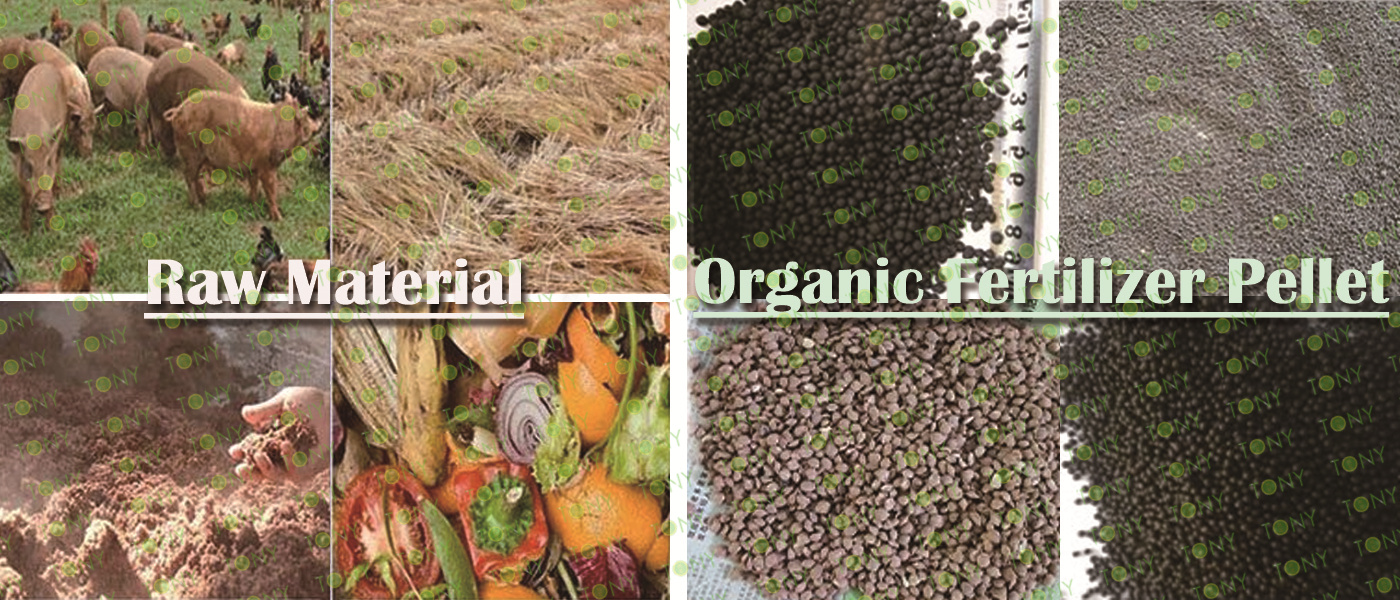
The Market Prospect Of Organic Fertilizer Pellets:
1. Market Demand
Organic fertilizer pellets have been favored by more and more farmers and organic farmers in recent years because of their environmental protection and sustainability. Compared with chemical fertilizers, organic fertilizer particles can provide more nutrients, improve soil structure, increase soil microbial activity, and promote soil health.
2. Production Of Raw Materials
The production of organic fertilizer particles mainly uses organic waste such as livestock and poultry manure, crop residues, and kitchen waste, which is made by fermentation, drying, granulation and other processes, which not only reduces agricultural waste, but also promotes the recycling of resources.
3. Application Field
Organic and microbial fertilizers are widely used in agriculture to improve crop yield and quality, improve soil structure and health, and reduce fertilizer use to achieve sustainable agriculture.
4. Development Trend
It is expected that the market demand for organic fertilizer particles will continue to grow in the future, and the market demand for organic fertilizer particles is particularly significant because they are rich in organic matter and beneficial microorganisms. Scientific research institutions and enterprises are constantly developing new and efficient bio-organic fertilizers to improve their fertilizer efficiency and stability and reduce fertilizer dependence.
5. Policy Support
Policy support for organic fertilizer products in various countries is also strengthening, and these measures will further promote the development of the organic fertilizer pellets market.

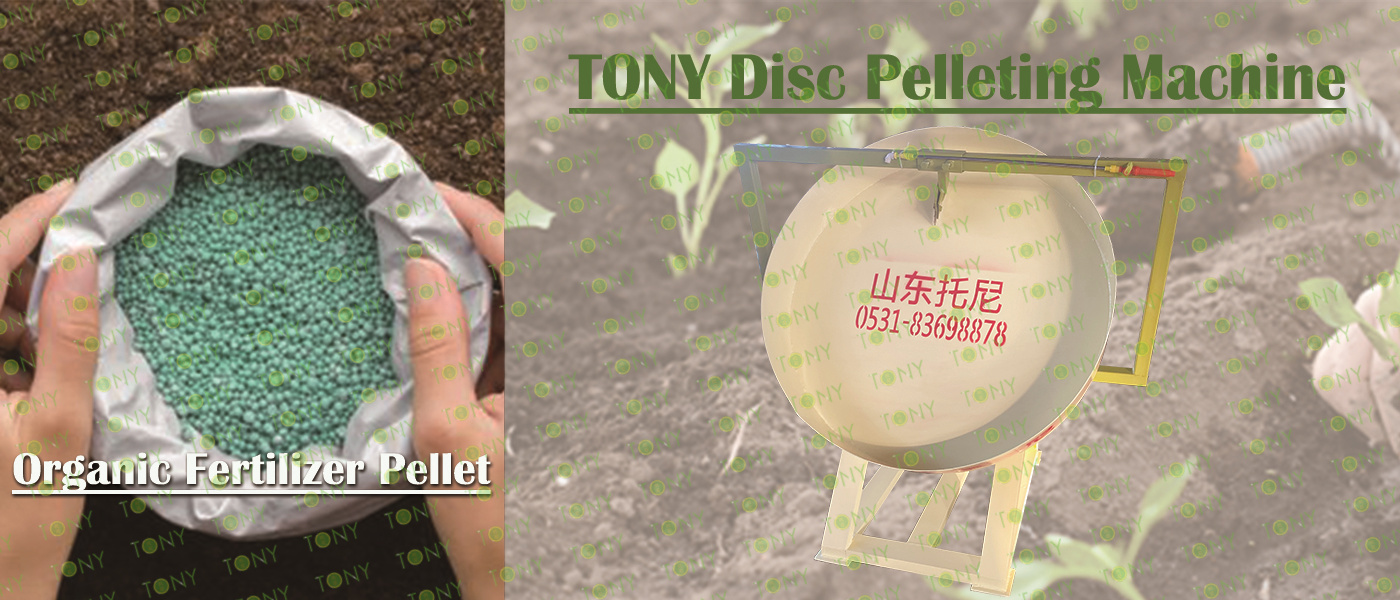
1. Project Background
In recent years, people have a higher awareness of the importance of food safety and environmental protection, and higher requirements have been put forward for issues such as pesticide residues and excessive use of fertilizers in agricultural production. Organic fertilizer, as a green and environmentally friendly agricultural production mode, has gradually received the attention of farmers and the government. In order to promote the popularization and application of organic fertilizer, it is of great practical significance to formulate the implementation plan of organic fertilizer project
Organic fertilizer pellet production line is based on animal manure, straw, kitchen waste and other organic waste as raw materials for production, does not contain any chemical composition, pigs, cattle, sheep and other livestock, poor digestion, can only consume 25% of the nutrients, and the other 75% of the nutrients in the feed with the excretion, containing rich nitrogen, phosphorus, potassium, organic matter, amino acids, proteins and other components. In terms of livestock manure and urine, the manure excreted by a pig in a year, combined with the bedding material, can retting 2000 to 2500kg high-quality organic fertilizer, which contains 11% to 12% organic matter, nitrogen 0.45%, phosphorus pentoxide 0.19%, potassium oxide 0.6%, enough for one mu of annual fertilizer, these organic fertilizers are rich in nitrogen, phosphorus, potassium and other nutrients. The content is more than 6% and the organic matter content is more than 35%, which is higher than the national standard.
An organic fertilizer production line can not only meet the local fertilizer needs, but also provide to meet the needs of the surrounding market. Bio-organic fertilizer is widely used in farmland, fruit trees, flowers, landscaping, high-grade lawn, soil improvement and other fields, with good results. So making investment choices is a very good choice.
2. Production Process
Organic fertilizer production line includes fermentation equipment, granulation equipment, crushing equipment, mixing equipment, screening equipment, cooling equipment, drying equipment, coating equipment, automatic packaging equipment and so on.
The production of organic fertilizer pellets is a complex and delicate process that involves the synergies of multiple links. Through reasonable raw material pretreatment, mixing, granulation, drying, cooling and screening, high quality organic fertilizer particles can be produced to meet the needs of modern agriculture.
3. Market Prospects
2024-2030 global and China organic fertilizer pellet industry analysis and market prospects show that the production of organic fertilizer pellets mainly uses livestock and poultry manure, crop residues, kitchen waste and other organic waste, through fermentation, drying, granulation and other processes, not only reduces the emission of agricultural waste, but also promotes the sustainable development of agriculture. With the emphasis on green ecological agriculture, the application prospect of organic fertilizer particles will be more and more broad.

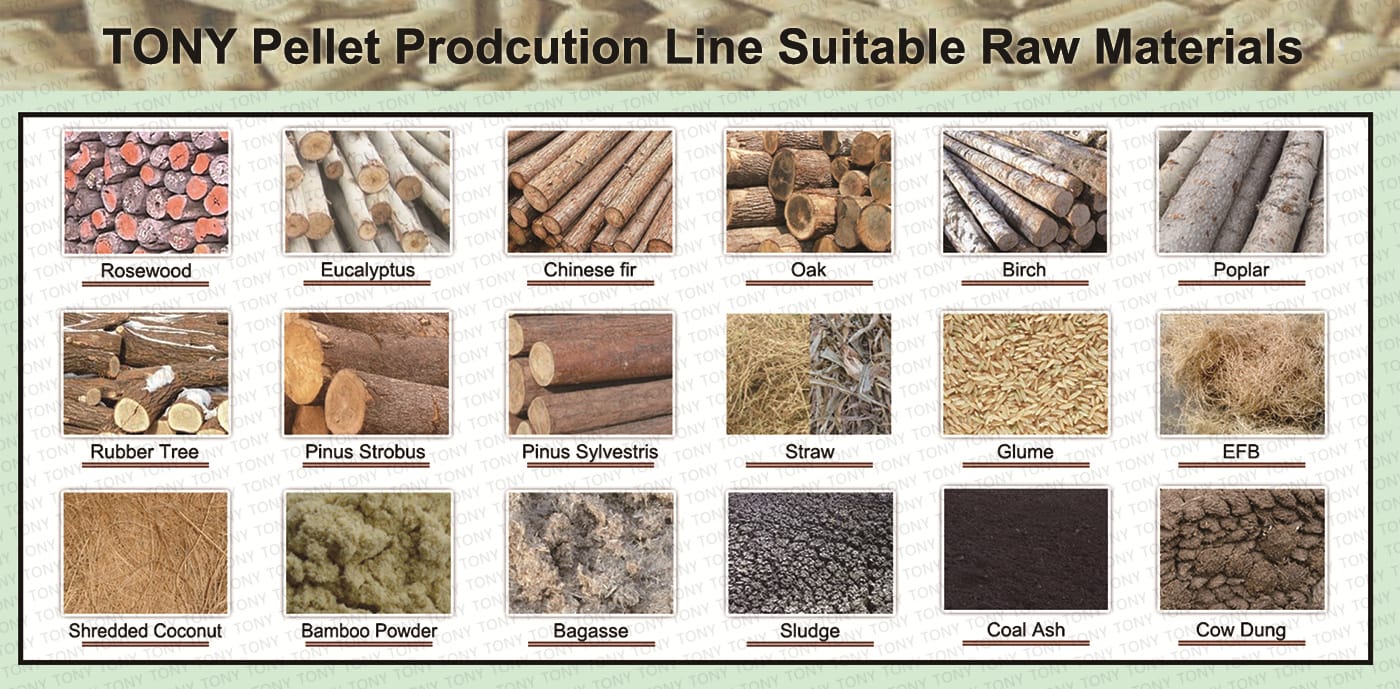
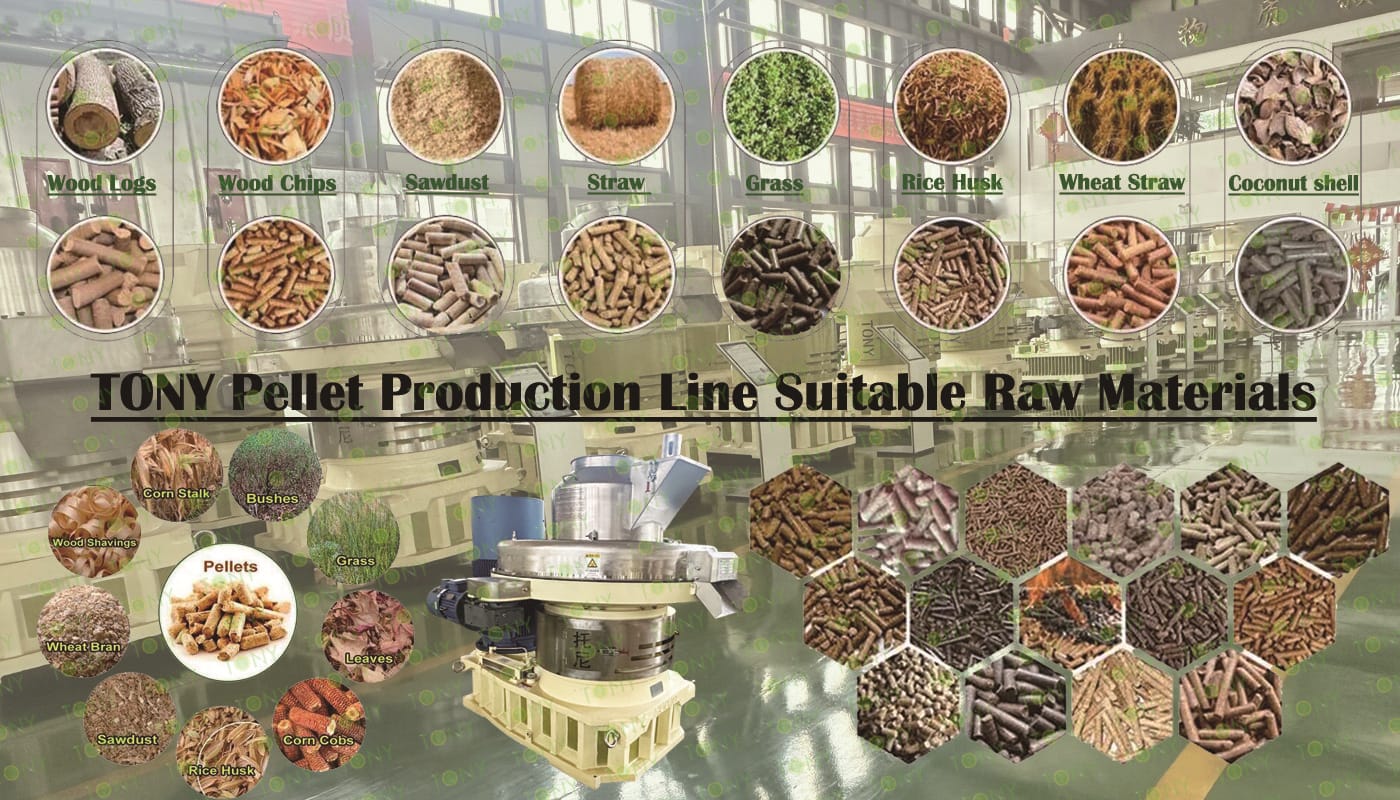

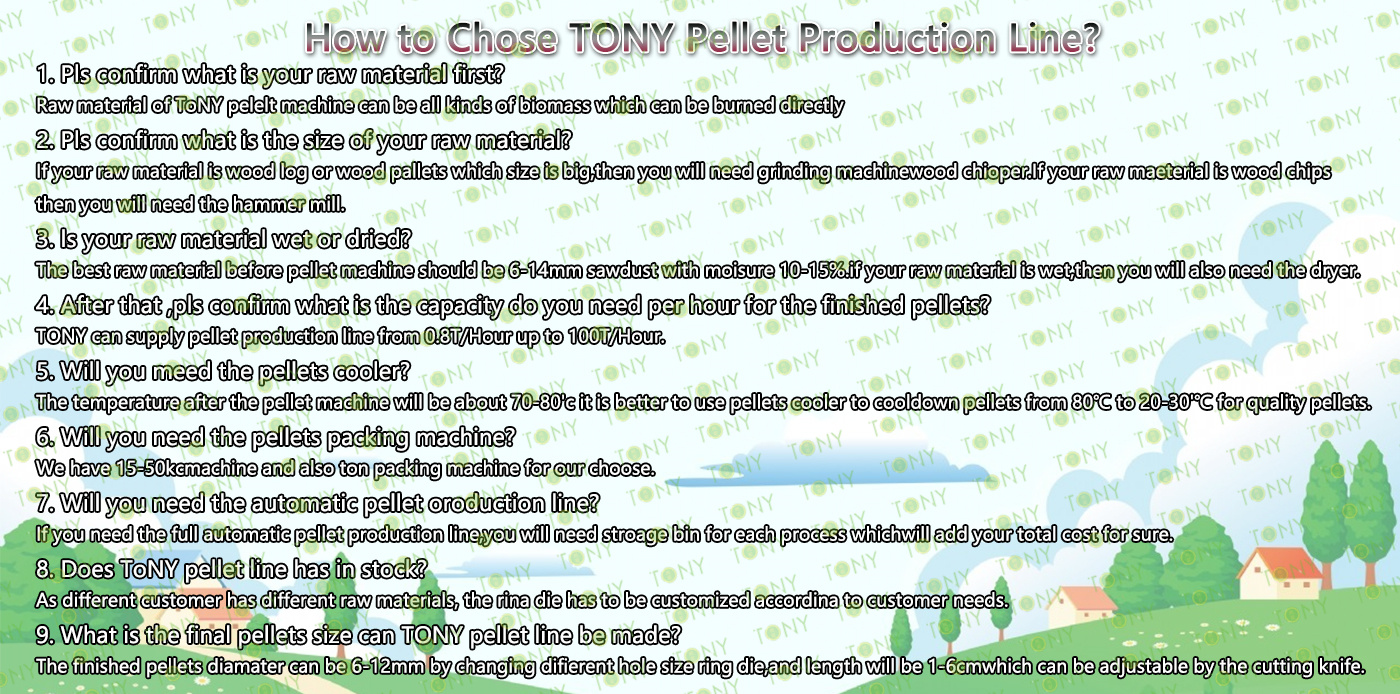

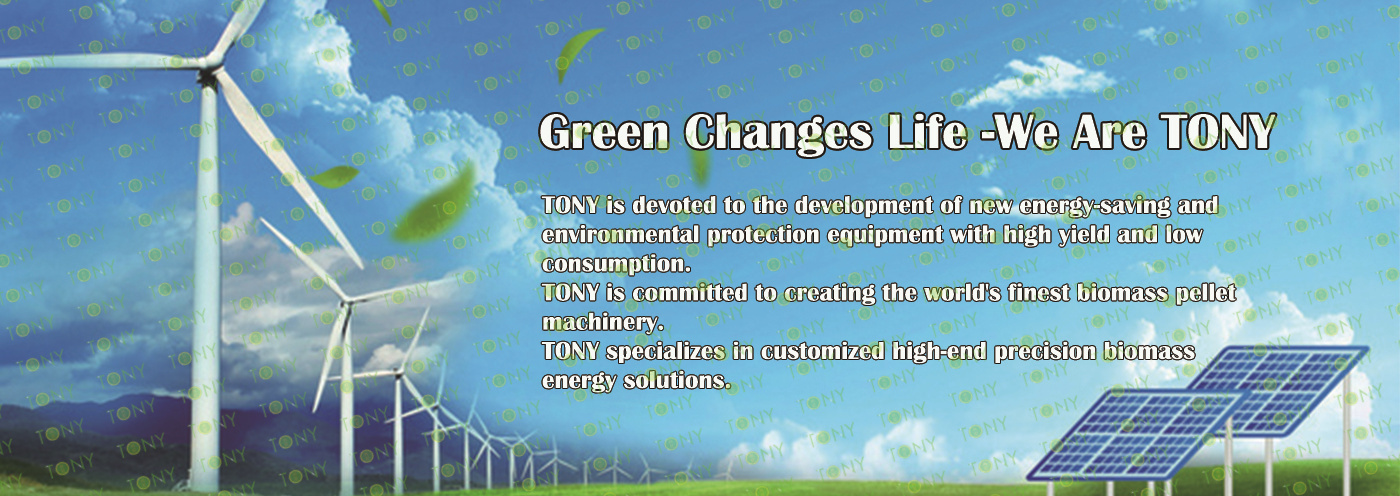
2025 Tony Machinery - All Rights Reserved. Map